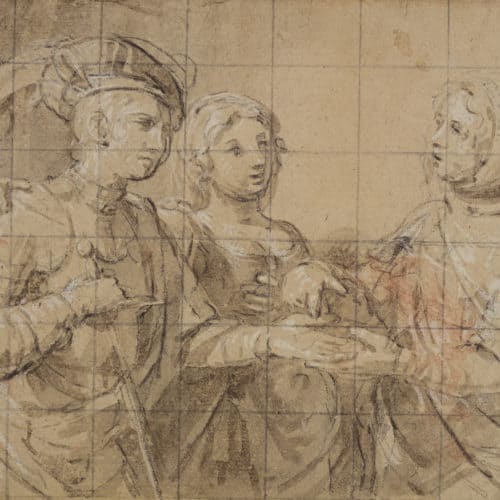Master Collection 8: 'The Fortune Teller'
The Fortune Teller. Unidentified French follower of Caravaggio. Black and brown chalk, brown wash heightened with white, squared in black chalk, on light brown paper.
The lady on the right is a fortune teller. She is reading the palm of the young man, who holds a sword and wears armour, so is probably a soldier.
Beside him is a young woman. She has her arm around him affectionately. The young man appears to be wealthy, from the quality of his clothes and armour. Look at the ostentatious feather in his hat.
The soldier had better watch out because a boy has sneaked up behind him and is stealing his purse. He may be working in a team with the fortune teller: pickpockets still work this way, one distracting the victim while the other steals! The young woman may be part of the team, luring the soldier to the fortune teller.
This drawing has been ‘squared up’: lines divide the composition into squares. This makes it easier to transfer the outline onto a larger canvas or wood panel for painting. Instead of trying to copy the whole drawing, you copy it square by square.
- Have a go yourself. Draw a square and copy what you can see in one of the squares.
The artist is currently unidentified. From the clothes it looks to have been drawn in the late 1500s or early 1600s, probably in France.
Inspiration for the subject came from the Italian artist Caravaggio (1573-1610), who famously painted a fortune teller. Among Caravaggio’s contemporaries in France was Georges de la Tour (1593-1653), who also painted a fortune teller. His composition has multiple figures like our drawing, whereas Caravaggio had just two - the fortune teller and the soldier.

